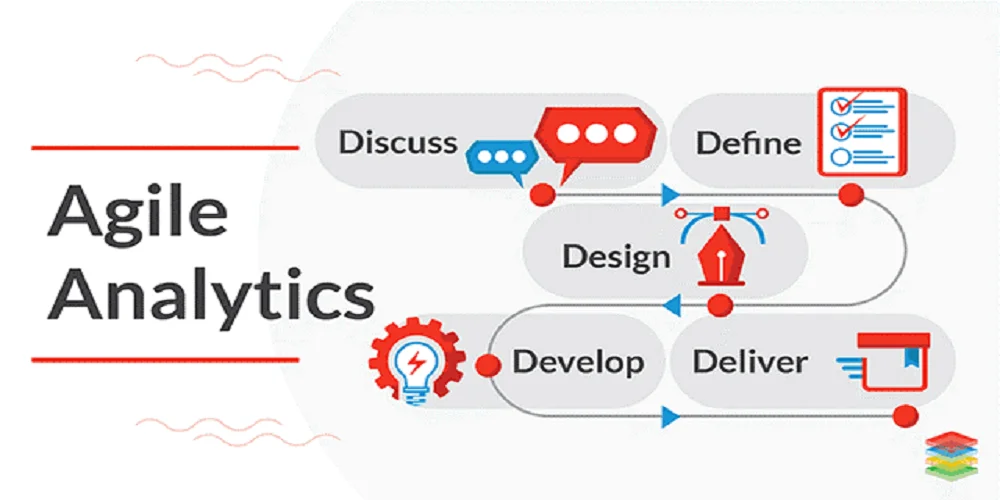
To what extent is each system customized? In other words, do you have any custom tables, entities, and fields that you believe will be required to be present in both of the systems? In a world that is always evolving, Agile Data Engine helps you realize the full potential of your data to generate more business value. Throughout the data platform's lifetime, you will see quicker business value, improved quality, and reduced costs with the assistance of a DataOps Management technology platform.
"Business Real-Time Processing" refers to what exactly?
Processing in a data warehouse that is close to real-time is what is meant by the term "Business Real-Time Processing". The approach emphasizes the significance of the participation of businesses in the process of designing and implementing data warehousing solutions. Real-time processing in business creates a balance between the benefits that the solution provides to the company and the costs and efforts that are required to deploy and operate the solution.
In situations where you are required to make decisions based on data that is constantly shifting, data that is two hours old or even older may not be able to assist decision-making. An e-commerce business, for instance, keeps a close eye on its inventory and sales in a manner that is very close to real-time. You need to decide on whether or not to purchase more items if, according to the data, a product will be out of stock. In addition to the current sales volumes, you may also base the choice on the historical sales volumes of the same product and product group, as well as other information such as the season that is now occurring or will occur shortly.
Even if you were able to investigate the scenario using an operational system, you would not be able to construct the monitoring on top of it since the operational system lacks data that is pertinent to the situation. On the other hand, your data warehouse has all of the required information. This is where data warehousing consulting becomes crucial, ensuring that your data warehouse is optimized to provide the necessary insights and support robust monitoring systems.
The traditional batch processing method is also insufficient since the processing should only take a few minutes, not days or even hours. Depending on the company, the rate at which the data must be accessible is a crucial factor. This is the reason why we refer to this kind of business processing as real-time processing from near real-time.
DataOps Management in Agile Environment: What Does It Mean?

The fundamental principle that underpins Agile Data Engine is known as DataOps Management. The implementation, operation, and management of analytical data products and the data platform are the focuses of this endeavor. The goal is to enhance productivity while minimizing operational expenses and ensuring that investments in data continue to pay off for a longer period.
1) Analyze the Need for Change
If you can take advantage of a modified demand at a later stage of the project, it may provide you with a competitive edge. You may take a more agile approach to change management, where your stakeholders can readily alter their views as the process moves forward, as opposed to implementing a rigorous procedure that is primarily built on change avoidance.
2) Consult before implementing changes
Providing functioning software after brief iterations, lasting no more than a few weeks, tends to make stakeholders significantly more interested in receiving working software than in receiving further requirements.
3) Calculate restatements continually
This duration of iterations provides a better possibility for effective project governance because of the increased input that comes from the consistent delivery of functional software.
Is the Agile Data Engine a concept?
Additionally, Agile Data Engine is a DataOps Management platform that allows for the design, deployment, operation, and management of data products, as well as the management of the whole lifecycle of a data warehouse. Data modeling, transformations, continuous delivery, and task orchestration are all integrated into a single platform by this solution.
1) The use of agile development approaches may be of assistance in resolving challenges about the workforce, working within time constraints, and delivering products late. The development team can collaborate more effectively and maintain a more balanced level of engagement throughout the process thanks to these techniques. During data warehousing projects, waterfall development life cycles require a significant amount of resources and often take much more time to finish than was originally anticipated.
2) Throughout the project life cycle, organizations have been attempting to eliminate duplication and reduce the length of projects by reducing the amount of time that project participants spend doing nothing. Because practically all of these tasks contribute directly to the bottom line of a business, it is of the utmost importance to discover methods that will allow software development projects to be effectively implemented on time.
3) Both data warehouses and databases are known systems that are relational data systems; nevertheless, they were constructed for distinct reasons. The differences between the two are not so significant that they are astonishing. Data warehouses are often constructed to store enormous amounts of historical data and also process queries, both basic and sophisticated, that are performed across all of the information that is stored in the warehouse. The use of online analytical processing techniques and algorithms often makes this a realizable possibility.
4) To gain data warehouse insights and develop visuals for certain data clients, analysts make use of data solutions. Models are developed and trained with the help of data scientists and machine learning developers. Customers who use their services are stakeholders throughout the whole company who are looking for business insights to help them make decisions, improve operations, and enhance solutions.
5) Agile Discipline facilitates the smooth integration of data from various sources into the data warehouse. By standardizing data formats, definitions, and transformation processes, you can simplify data integration workflows. This reduces the time and effort required for data ingestion, cleansing, and transformation, enabling faster availability of reliable and consolidated data for analysis.
Bottom Line
Finally, we have looked at how discipline may unlock an agile data warehouse's full potential. Organizations may overcome typical obstacles and get the most out of their data warehouse by using systematic procedures and practices. Everything from establishing precise targets to ensuring the reliability of data.



